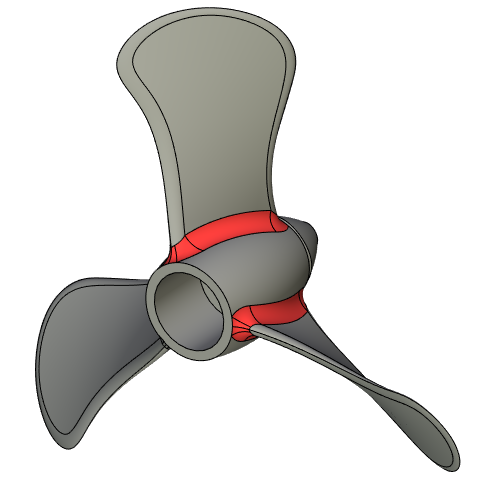Types of Face Blend |
  
|
Following blend types are available in the ![]() Face Blend command:
Face Blend command:
The rolling-ball blend has cross-sectional planes that are orthogonal to the walls of the blend.
Source faces |
Rolling ball blend result |
|
|
1. Left wall 2. Right wall 3. Cross-sectional planes |
|
The disc blend requires a spine. This type of blend has cross-sectional planes that are orthogonal to the specified parameter spine in each point.
Source faces |
Disc blend result |
|
|
1. Left wall 2. Right wall 3. Cross-sectional planes 4. Parameter spine |
|
Isoparametric blend is used to make a blend between a turbine blade and a base. This type of blend has cross-sectional planes oriented along the isoparametric lines of the blade surface. Because of this, the blade surface has to be chosen as the first set of faces - a left wall, and the spine must belong to it. A dependency is established between the points on the spine and the blade surface. Then the specified cross-section blend surface is constructed tangent to the current isoline.

As you can see below, when using other types of blend for this purpose, blend surface may have self-intersection zones. Isoparametric blend allows to has no such flaws.
|
|
Rolling ball blend |
Isoparametric blend |